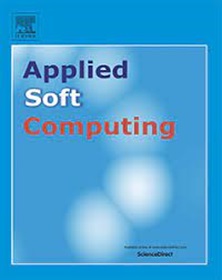Leveraging more information for blind stereo super-resolution via large-window cross-attention
IF 7.2
1区 计算机科学
Q1 COMPUTER SCIENCE, ARTIFICIAL INTELLIGENCE
引用次数: 0
Abstract
Stereo image super-resolution aims to reconstruct high-resolution images by effectively utilizing cross-view complementary information from stereo image pairs. A prevalent method in Stereo image super-resolution is the stereo cross-attention module, which allows the model to focus on and integrate relevant features from both the left and right views. Despite its advantages, our analysis using a diagnostic tool called local attribution map (LAM) reveals that current methods exhibit limitations in effectively leveraging this complementary information. To address this issue, we propose the Double Stereo Cross-Attention Module (DSCAM), which utilizes an Overlapping Stereo Cross-Attention (OSCA) mechanism that enhances the integration of cross-view complementary information by using overlapping windows, followed by an additional multiplication step to refine and emphasize the combined features. Additionally, we develop a stereo image degradation model that ensures the consistency of degradation between stereo pairs, accurately simulating the real-world degradation process of stereo images. Extensive experiments have demonstrated that our method achieves visually pleasing results, making it the first to address the problem of stereo image super-resolution in real-world scenarios. The source code is available at https://github.com/nathan66666/LCASSR.git.
通过大窗口交叉关注,利用更多信息实现盲立体超分辨率
立体图像超分辨率旨在通过有效利用立体图像对的跨视角互补信息来重建高分辨率图像。立体图像超分辨率的一种常用方法是立体交叉关注模块,它允许模型关注并整合来自左右视图的相关特征。尽管这种方法有很多优点,但我们使用一种名为局部归因图(LAM)的诊断工具进行的分析表明,目前的方法在有效利用这些互补信息方面存在局限性。为了解决这个问题,我们提出了双立体交叉注意模块(DSCAM),该模块利用重叠立体交叉注意(OSCA)机制,通过使用重叠窗口来加强跨视角互补信息的整合,然后通过额外的乘法步骤来完善和强调组合特征。此外,我们还开发了一种立体图像降解模型,可确保立体图像对之间降解的一致性,准确模拟现实世界中立体图像的降解过程。广泛的实验证明,我们的方法取得了令人满意的视觉效果,首次解决了现实世界中的立体图像超分辨率问题。源代码见 https://github.com/nathan66666/LCASSR.git。
本文章由计算机程序翻译,如有差异,请以英文原文为准。
求助全文
约1分钟内获得全文
求助全文
来源期刊

Applied Soft Computing
工程技术-计算机:跨学科应用
CiteScore
15.80
自引率
6.90%
发文量
874
审稿时长
10.9 months
期刊介绍:
Applied Soft Computing is an international journal promoting an integrated view of soft computing to solve real life problems.The focus is to publish the highest quality research in application and convergence of the areas of Fuzzy Logic, Neural Networks, Evolutionary Computing, Rough Sets and other similar techniques to address real world complexities.
Applied Soft Computing is a rolling publication: articles are published as soon as the editor-in-chief has accepted them. Therefore, the web site will continuously be updated with new articles and the publication time will be short.
 求助内容:
求助内容: 应助结果提醒方式:
应助结果提醒方式:


